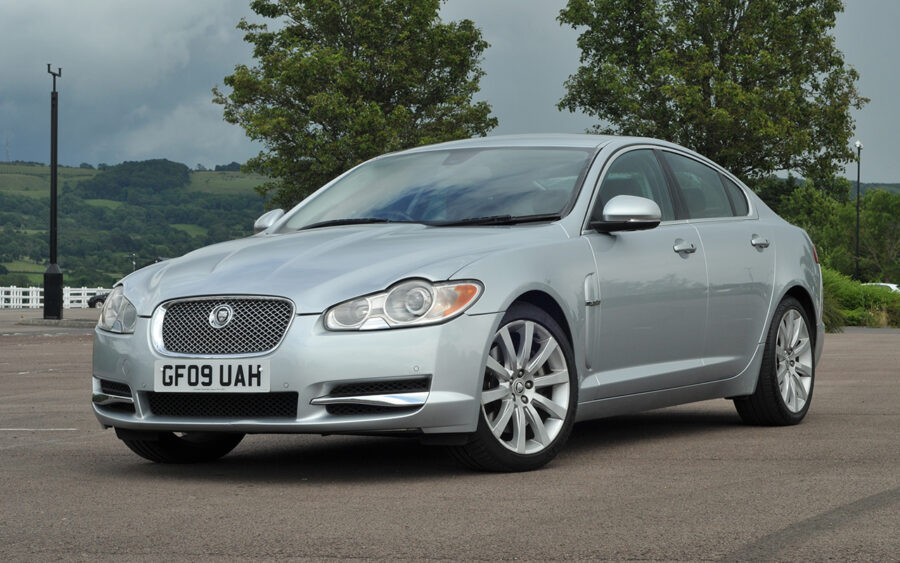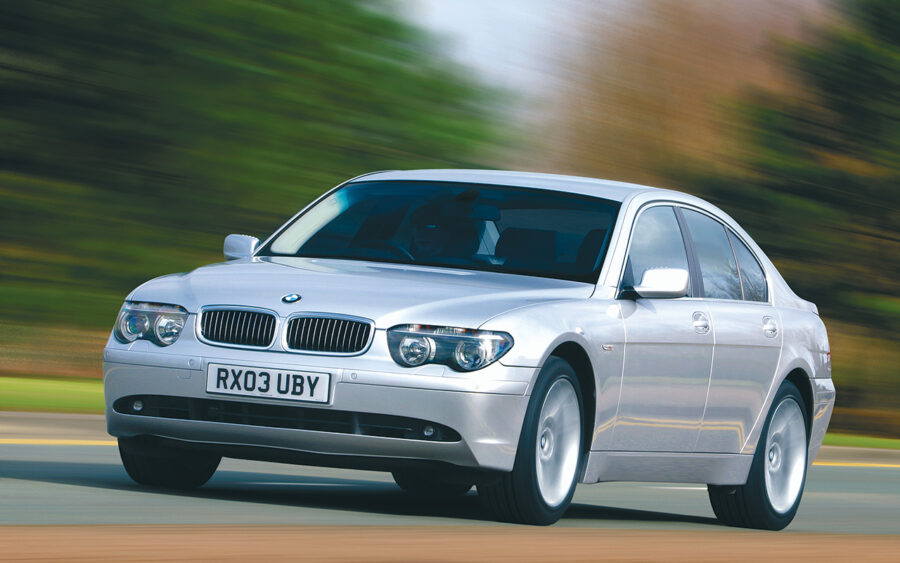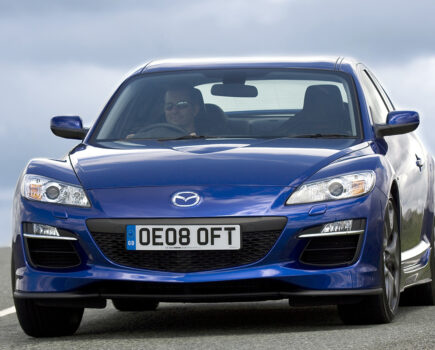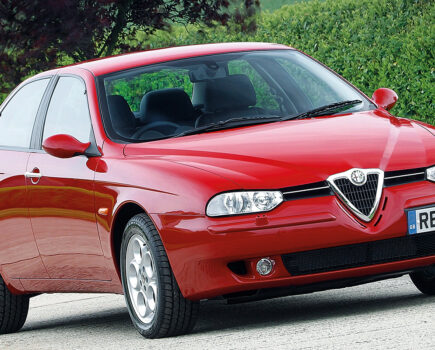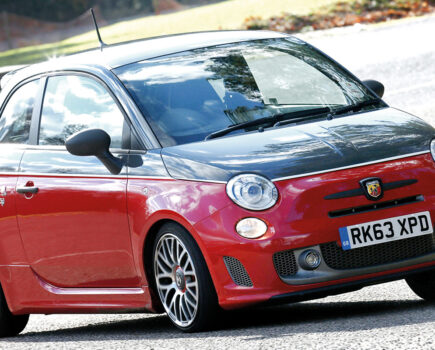It may have fallen out of favour but diesel isn’t quite dead yet. Here are our favourite used diesel cars under £10,000
Words: James Bowers
Diesel is a dirty word these days but if you regularly travel long distances there are few better alternatives. With so many excellent diesel-powered executive cars produced during the fuel’s heyday as the company buyer’s go-to, today’s used market is full of desirable models boasting decent economy and torquey performance.
We’ve selected some of the best examples of the breed below with a focus on space, luxury, comfort, performance and practicality – as well as plenty of premium-badge cachet. Spend your life on the motorway? Look no further.
BMW 7 Series (E65)
Amidst all the furore around BMW’s modern offerings, it’s easy to forget that we’ve been here before: in 2001 the wraps came off the first of a new era of cars under the design direction of Chris Bangle and the world’s automotive press took a collective gasp of amazement.
Bangle’s idea was to move away from ‘cookie cutter’ cars where BMW effectively offered one car in three sizes, and it was really very different from the outgoing, elegantly proportioned E38 7 Series.
Controversial it may have been, but the low-volume 7 Series was an easy way for BMW to experiment with a new design language and also new technology – most significant of which was the iDrive which replaced the scattered control buttons of the conventional luxury car with a single rotary controller.
At launch, the E65 was offered in the UK with only petrol powerplants, but by 2005 the straight-six 730d had been added to the range and quickly proved to be the strongest seller. Over in Europe, 7 Series buyers could also choose the V8 740d and the twin-turbo 745d rated at 553lb ft but alas we would be denied this until the F01 generation car in 2008.
As for the ownership experience, common problems are a worn turbo, tired injectors and the occasional swirl flap drama but little of that is very expensive. Regular oil changes and careful use can make a turbo last 200,000 miles.
The swirl flaps were a well-publicised issue at the time, being plastic butterflies in the inlet which open and close to promote swirl in the intake charge. They can break up and enter the engine and although the plastic flaps themselves won’t cause damage, the metal fittings will. Many owners simply remove and blank them off, using specially made blanking plates and notice no difference in performance at all.
As for values, expect to pay a minimum of £3000 for a presentable example showing around 100,000 miles, values rising with condition and mileage to a ceiling of around the £5000 mark.
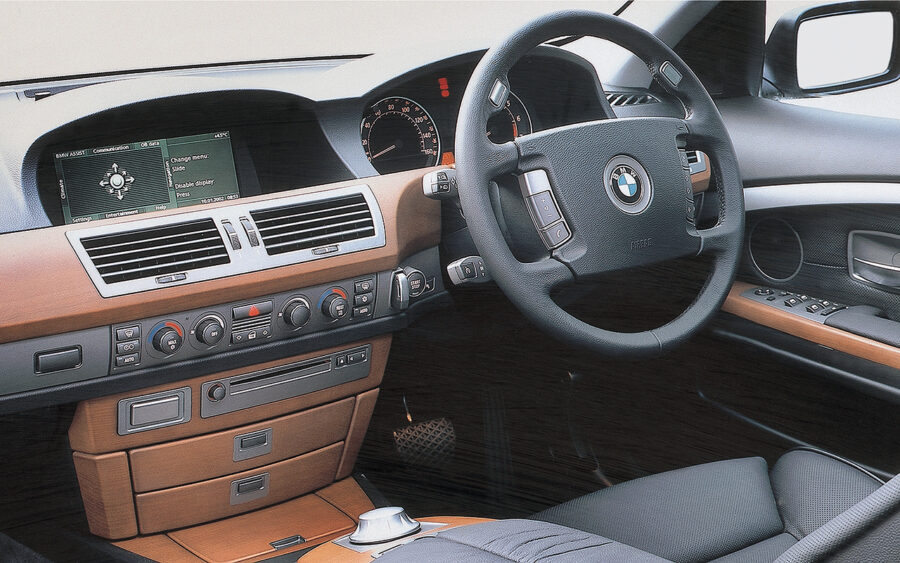
Audi A8 (D3)
The second-gen Audi A8 was around for quite a while, debuting in 2002 and soldiering on until 2009. In 2007 though, it received a major facelift, and it’s that car which we’ll be focusing
on here.
The Audi A8 was pretty loaded with tech: adaptive bi-xenon headlights came as standard, as did the air suspension and continuous damping control. On top of that, the A8 was the first Audi model to get the iDrive-rivalling MMI onboard computer.
The facelift added optional features such as full speed range cruise control, blind spot sensors and a frontal impact warning system. Most obvious was its heavily revised front end.
Diesel buyers carn choose from a 3.0-litre V6 TDI or a 4.1-litre V8; the V6 offers 230bhp and a fuel economy of around 34mpg. You’ll naturally get more performance out of the 322bhp V8, however – with 479lb.ft of torque, that engine will whisk you to 60mph in less than six seconds flat.
Assuming you want one with less than 100,000 miles on the clock, you’ll have to pay somewhere between £5000–7500 for a V6, while the V8s tend to demand a bit extra. Good examples of those are relatively scarce beneath the ten-grand mark, but it is still very much possible to find them if you look hard enough.
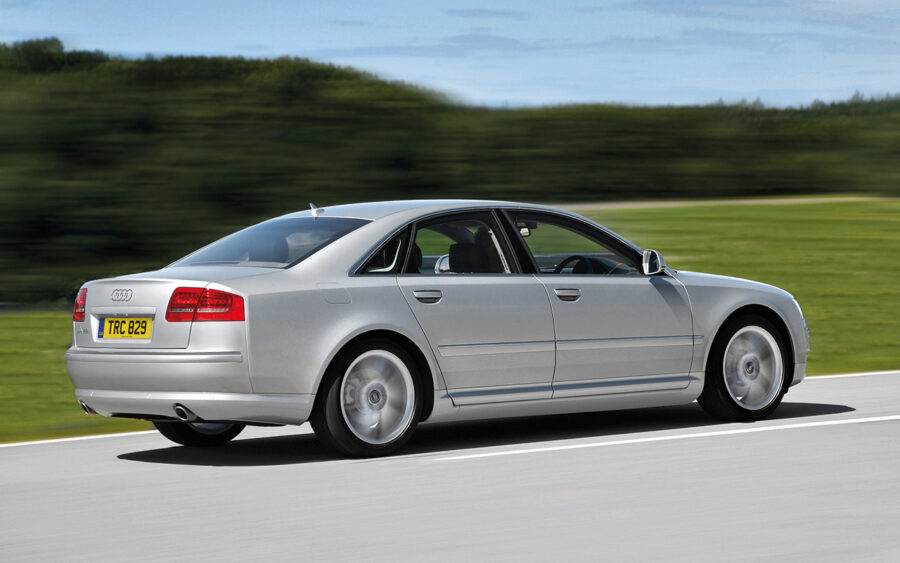
Jaguar XJ (X350)
Despite its somewhat stuffy styling, the X350-gen XJ was actually quite a revolutionary iteration of Jag’s long-standing premier saloon. Of course, most of the headlines go to its lightweight aluminium body, and the rewarding driving dynamics that come with it. However, it’s also worthy of a mention simply for being the first ever XJ available with a diesel powertrain.
Admittedly, up against the petrol V8s, the X350’s PSA-sourced diesel hardly seems like the most enticing option of the range. That said, the 2.7-litre V6 is a good enough engine in its own right. 201 horsepower and 321lb.ft of torque certainly feels brisk when you put your foot down. Treat the right pedal with a bit more finesse though, and you should be able to eke out some 35mpg.
A notable facelift arrived in 2007, giving the XJ a slightly more modern, sporty guise, but mechanically little changed throughout the car’s lifespan.
One of the best handling vehicles on this list, if you’re somebody who enjoys a spirited drive every now and then, then the XJ is one of your better options. It won’t cost you too much to land one either.
Prices for five-figure-mileage cars start just above £4000, while £5000-£6000 should land you a reasonable one. If you’re willing to spend upwards of £8500, that’s where you’ll find the cream of the crop.
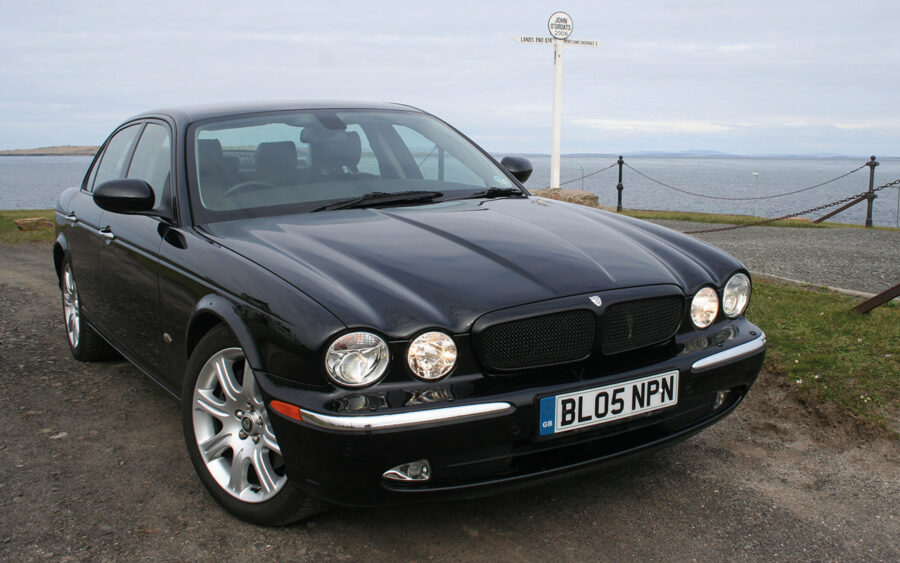
Mercedes-Benz S-Class (W221)
You can’t talk about long-distance luxury without at some point mentioning the Mercedes-Benz S-Class, arguably the flagship of all the cars in this genre. After a slightly shaky period for Merc between the mid-nineties and early noughties, the 2005 W221 S-Class signalled a return to form for the Stuttgart brand.
The styling was a welcome evolution, while inside the cabin, there was a far greater concentration of high-end materials. To go along with the extra swathes of leather and wood, you also benefit from a whole host of assists and creature comforts, ranging from an infrared night vision display to a high-end Harman Kardon sound system.
Once you actually get moving, don’t expect the S-Class to feel as agile as the XJ. Instead, this vehicle is solely about cruising (at pace), and thanks to its ‘Airmatic’ suspension, it’s a class leader in that field.
Engine-wise, there’s a few diesel options to choose from. We’d probably steer clear of the 2.1-litre four-cylinder, even if it wasn’t practically impossible to find on the used market. Instead, you probably want to aim for the S320 or S350 V6s, especially if you can find a later BlueEfficiency model within your budget. These will give you roughly an extra 3-5mpg over than standard diesel V6s.
As for the cost, well, these are likely to take you right up to the top end of the £10,000 threshold if you target the newest, most tech-packed variants out there. However, if you’re willing to buy an older example with a lesser spec sheet, then you’ll be able to get your hands on a nice one for as little as £6500.
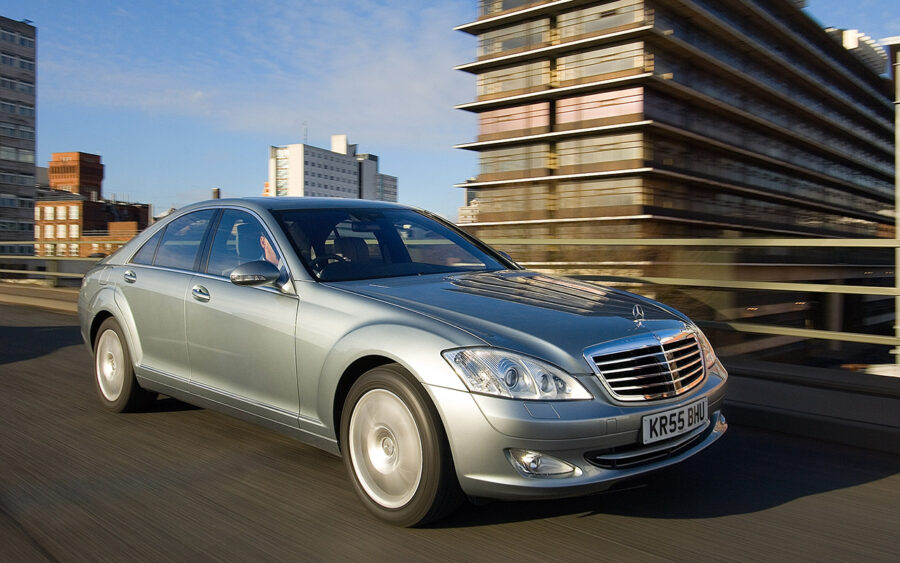
Range Rover (L322)
First introduced in 2001, the third-gen Range Rover is a car which enjoyed critical acclaim throughout the 2000s. Variable air suspension improved its roadholding capabilities over the Mk2, while simultaneously allowing it to retain the sort of suspension travel that enabled competent off-roading. It’s this multipurpose mastery which endeared the L322 to the masses, as it quickly garnered a reputation as the luxury car for all scenarios.
That said, Land Rover felt the need to give it multiple updates over the years. 2006 was one of the first instances of this, when the Range Rover got a relatively light makeover and updated infotainment system.
The following year, better brakes were fitted, and the suspension got an upgrade too. However, the biggest change came under the bonnet. As far as diesel variants of the Range Rover are concerned, early examples came with a BMW straight-six, but for 2007, that power unit was replaced. Instead, Ford’s 3.6-litre diesel V8 now sat in its place, increasing power from 177bhp to a much more potent 272bhp. Torque, meanwhile, stood at 472lb.ft.
More changes were to come later in the L322’s life, but for the purpose of this article, it’s really only the pre-2010 examples that fit the budget. You can buy a third-gen Range Rover with decent mileage for as little as six grand, but we’d advise against cutting costs with these cars. As good as they are, they do have a less than favourable reliability record, so you should aim to buy the best one you can. A budget of £10,000 should easily be enough to bag a clean one with about 75,000 miles on the clock.

Chrysler 300C
The Chrysler 300C represents a very different interpretation of the word ‘executive’. Offering more outward brawn than its European counterparts, the 300C is luxury car for people who don’t want to blend in with the crowd.
Naturally, given its heritage, it’s tempting to go down the petrol Hemi V8 route with these. However, we’ll stick to the brief and focus on the diesel one instead. The engine used in that car is actually the same V6 sometimes spotted in the aforementioned S-Class. So in other words, it’s quite good.
As for the rest of the car, the Mk1 300C had a few different trim levels. The LX base model is perhaps the least ‘executive’ car on this list, but top-of-the-range cars had 20-inch alloys, inbuilt satellite navigation, and Chrysler’s MyGIG infotainment screen. Admittedly though, none of that can really hold a candle to what the top-end European marques offer.
Still, if it’s value for money that you’re after, the 300C is a great option to have. An absolutely mint example will struggle to creep past the £8000-mark, and most of the better ones on the market are sitting at around £4500-£6500. So, while it might not be the absolute best executive diesel on the used market, you get an awful lot of bang for your buck.
Not keen on the saloon version? Well, for the same sort of price, you could opt for the 300C Touring estate instead. And if the Mk1 in general just isn’t for you, maybe you’d prefer the softer styling of the Mk2 – this budget can get you into one of those as well, though there aren’t so many around.
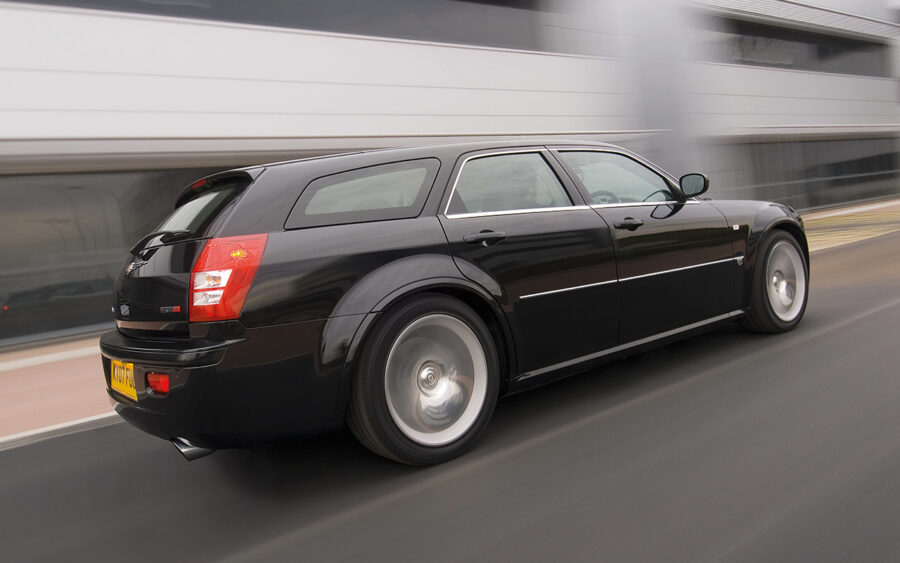
Volvo S80
Another slightly left-field choice is this, the Volvo S80: specifically, the second generation. A surprisingly rare sight in the UK, the S80 Mk2 was on sale between 2006-2016, though the very latest cars are typically a bit beyond the price range we’re looking at.
However, for anywhere between £5500-£10,000, a slightly older model could be yours. That covers a wide variance of cars though, so let’s dive a bit deeper into what you’d actually be getting for the money.
At the lower end of the spectrum, you’ll find S80s with the 2.0-litre four-cylinder diesel, and older five-cylinder cars. The vast majority of the examples on the market, however, are middle-age S80s fitted with the 2.4-litre five-pot. Unfortunately, whereas this luxury Volvo could be equipped with anything as large as a V8 in petrol form, the five-cylinder is the biggest diesel option available. But hey, although it doesn’t have the outright performance of the upper echelon of cars on this list, it makes up for it with a fairly impressive 46mpg fuel economy.
Blind spot sensors, braking assistance, and adaptive cruise control are just some of the optional extras to look out for, while a 7-inch infotainment system arrived in cars built from 2012 onwards.
Ultimately, if you like the idea of discreet luxury, the S80 could be the reasonably-priced car for you.

BMW X5 (E53)
The original BMW X5 was one of the earliest entries into the luxury SUV market – and a very important car in BMW history. Of course, the Range Rover had been around for a long time prior, but the X5 (alongside the Mercedes M-Class) was one of the earliest examples of a brand with little-to-no off-roading background jumping onto the now mandatory SUV bandwagon. Its legacy is significant to say the least, and plain to see from the now-sprawling range of SUVs in the brand’s lineup.
In a way, that should make me rather unfond of it. After all, without the success of the X5, perhaps the ensuing tidal wave of dreary modern-day ‘soft roaders’ wouldn’t have come to fruition in the way it has.
Visually, it carries itself very well indeed, like most turn-of-the-century BMWs do, and it’s just as well put-together mechanically. Mind you, it shouldn’t be a surprise that the Mk1 X5 was a good car – after all, it took a lot of inspiration from the L322 Range Rover, thanks to the relationship that existed back then between the two different marques.
In fact, if you trace the DNA of the X5’s components back to their origins, you’ll find that it is effectively a crossbreed of Range Rover and E39 5 Series. What a combination! Naturally, that also means that in diesel guise it shares the same 3.0-litre straight-six engine as early L322s.
If you want a Mk1 X5 diesel today, average examples will set you back somewhere in the region of £4000–6000, while pristine examples are priced closer to the £8000 mark.
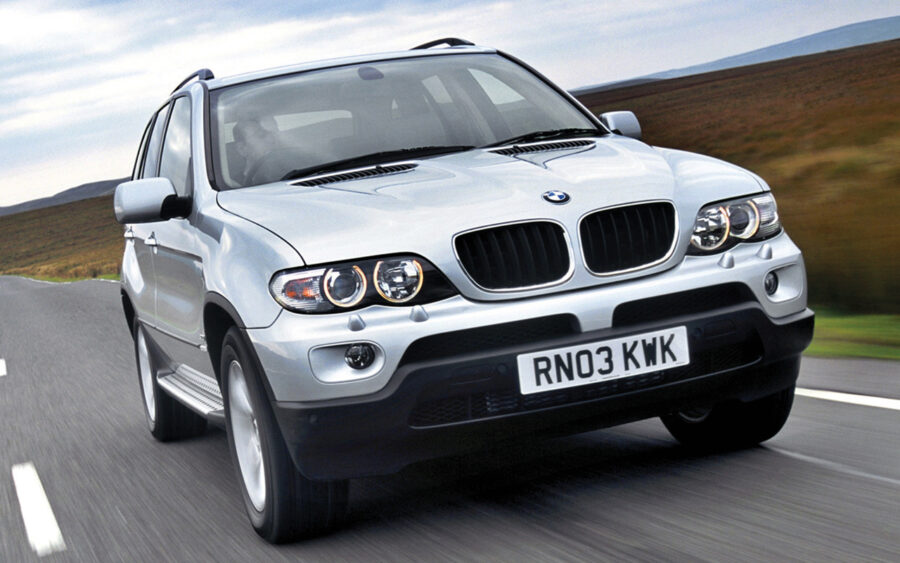
Jaguar XF (X250)
A midway point between the XJ and XE models, the XF provides a healthy dose of typical Jaguar luxury in a package that’s slightly more compact – and thus sportier – than the XJ.
The X250-generation XF was particularly special, being the first of a new wave of cars built around a (much-needed) fresh design language. The new age feel to the car continued on the inside as well; a trend summed up nicely by the circular gear selector which raises up from the transmission tunnel once you switch the ignition on, while leather upholstery comes as standard.
As for the engine options, in diesel form the XF came with a 2.7-litre V6 upon launch, upgraded shortly afterwards to 3.0 litres. However, a 2.2-litre four-pot joined the range as part of the 2011 facelift. This smaller unit should appeal to more economically minded drivers, as it’ll hit 52.3mpg according to Jag.
Pricewise, the Jaguar XF fits a wide range of budgets. If you’ve only got £3000-£4000 to spend, that could still land you a pre-facelift model with 90,000-odd miles clocked. Though, it probably won’t be the tidiest example out there. The average expenditure on an early X250-gen XF is typically between £5000–6500, while respectable facelifted ones start at around £7000.
